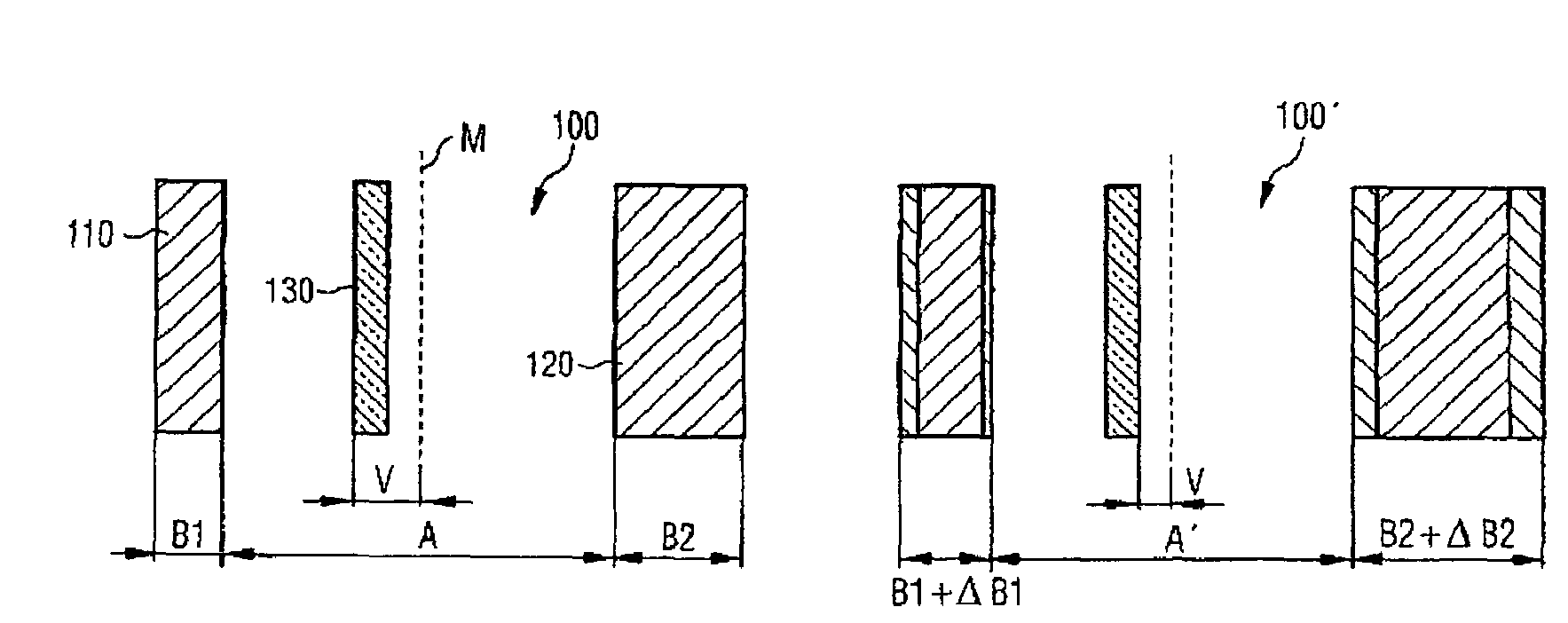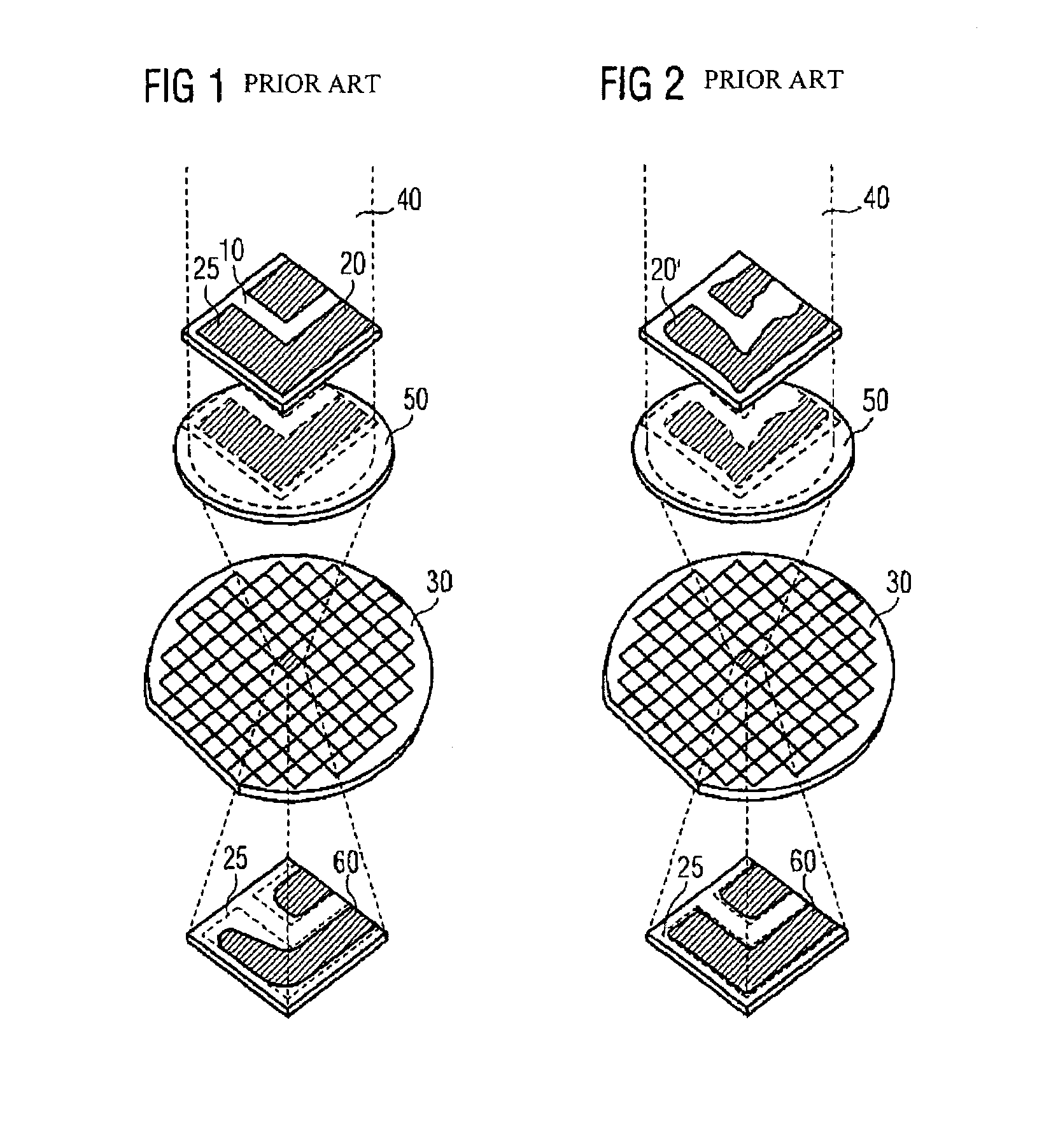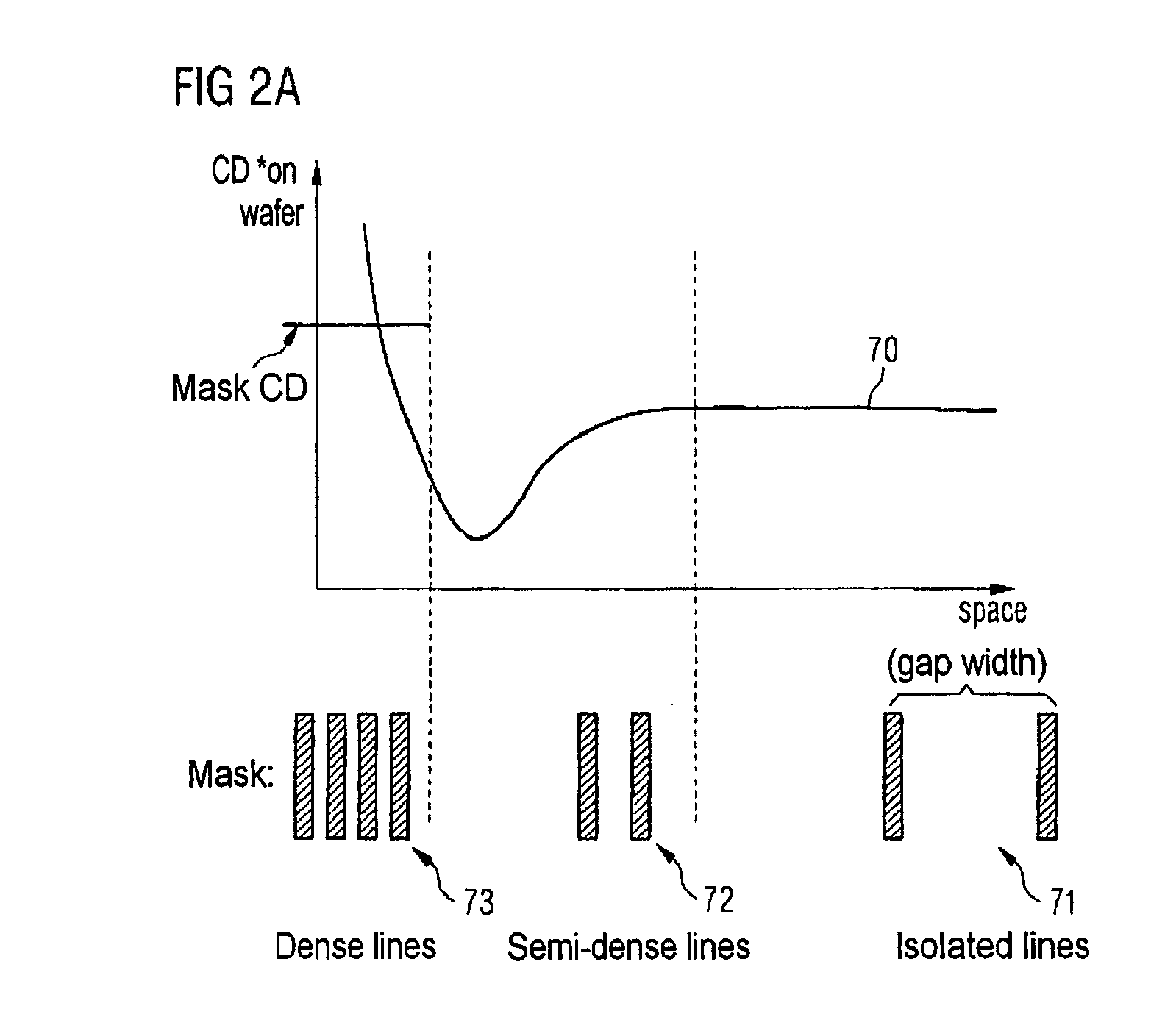Method for producing a mask layout avoiding imaging errors for a mask
a mask and mask technology, applied in the field of mask layout avoiding mask imaging errors, can solve the problems of not being able to meet the predefined geometrical dimensions of the mask structure, imaging errors can occur, and mask layouts may not be produced
- Summary
- Abstract
- Description
- Claims
- Application Information
AI Technical Summary
Benefits of technology
Problems solved by technology
Method used
Image
Examples
first exemplary embodiment
[0123]FIGS. 3A and 3B show, by way of example, the eccentric arrangement according to the invention of optically non-resolvable auxiliary structures (first exemplary embodiment).
[0124]FIG. 3A reveals a provisional auxiliary mask layout 100 comprising two lines (or bars) 110 and 120 arranged at a distance A. The two lines have different structures widths B1 and B2. A scatterbar 130 is added as an optically non-resolvable auxiliary structure between the two lines 110 and 120. As can be discerned in FIG. 3A, the scatterbar 130 is offset by an offset V relative to the centre M between the two bars 110 and 120. The size of offset V is chosen in a manner dependent on the width difference ΔB where
ΔB=B1−B2
and the distance A between the lines and can be gathered for example from the table in FIG. 12. The offset V is thus a function of the following variables:
V=f(ΔB, A)
[0125]As an alternative, the absolute values of the widths may also have an influence in addition. In this case, then, the of...
seventh exemplary embodiment
[0165]In the method, the SRAF auxiliary structures 550 are arranged exclusively in the region of the active layout regions 430′ (see FIGS. 16 and 17). No SRAF auxiliary structures are positioned in the remaining layout regions 440′ (“gate-only” positioning as seventh exemplary embodiment).
eighth exemplary embodiment
[0166]It can be discerned in FIG. 17 that despite the optimization of the mask layout, it is possible for regions 600 to occur in which the inactive layout region 440′ make contact with the active layout regions 430′ after the OPC method has been carried out. These problems may occur in isolated fashion since, as explained above, the inactive layout regions 440′ are processed by means of a defocus OPC method, so that a certain expanding of lines and / or corners occurs. Such regions where contact is made must be detected, if appropriate in the course of an aftertreatment, for example an automatic or manual aftertreatment, and repaired (eighth exemplary embodiment).
PUM
 Login to View More
Login to View More Abstract
Description
Claims
Application Information
 Login to View More
Login to View More - R&D
- Intellectual Property
- Life Sciences
- Materials
- Tech Scout
- Unparalleled Data Quality
- Higher Quality Content
- 60% Fewer Hallucinations
Browse by: Latest US Patents, China's latest patents, Technical Efficacy Thesaurus, Application Domain, Technology Topic, Popular Technical Reports.
© 2025 PatSnap. All rights reserved.Legal|Privacy policy|Modern Slavery Act Transparency Statement|Sitemap|About US| Contact US: help@patsnap.com



